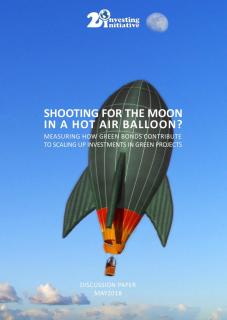
A vast amount of investment is needed to tackle the infrastructural and technological requirements to bring about a transition to a low-carbon greener economy. While estimates vary, according to the OECD the total infrastructure investment required for a successful low-carbon transition from 2015 to 2030 is estimated at around $95 trillion, or around $7 trillion per year allocated to projects in the water and waste, telecom, energy and transport sectors. In order to ensure such a large investment total a vast mobilization of resources as well as private and public sector engagement, collaboration and funding will be necessary.
The paper focuses on the case of ‘Use-of-Proceeds Green Bonds’ (UoP GB) that represent 95% of the market in 2016. It discusses the link between increasing investment in UoP-GB on the one hand, and the growth of investments in green projects by issuers on the other hand, suggesting how this approach can be enhanced to achieve further impact. The paper shows that we currently lack evidence to conclude that as currently designed UoP GB contribute – or can without further enhancement contribute – to scaling up the investments in green projects.
- First, the financial risks specific to earmarked green projects remains on the balance sheet of the green bond issuers, meaning their capacity to invest in more green projects remains the same as with standard bond issuance.
- A key issue is whether increased green investment actually takes place above a business as usual baseline. In effect this is the key issue – do the UoP bonds lead to an overall shift in the balance sheet of the issuer over time?
- Second, the main potential financial incentive for issuers, the ‘green premium’ paid by investors to acquire green bonds, seems structurally limited by the lack of tangible financial benefit for these investors.
